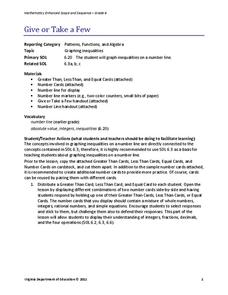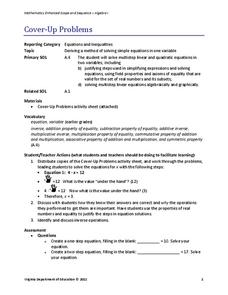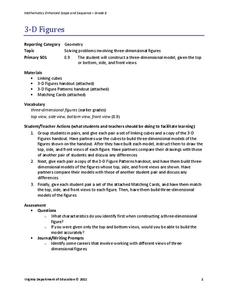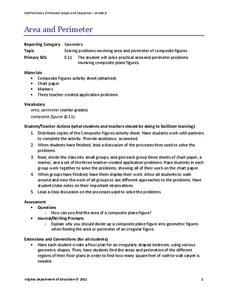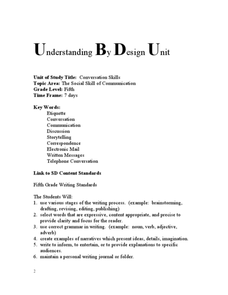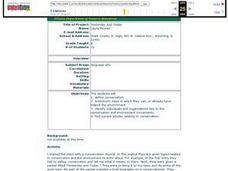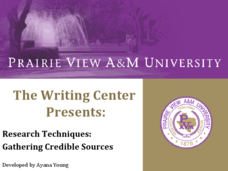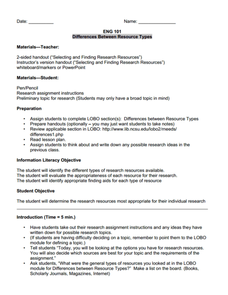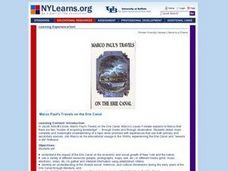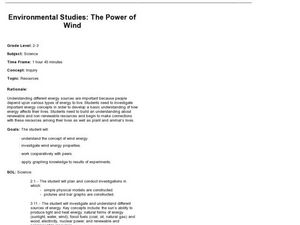Virginia Department of Education
Similar Figures
How similar do figures have to be to be similar figures? Individuals learn to identify similar figures by verifying that angles are congruent and sides are proportional. Additionally, they match the corresponding parts of similar figures.
Virginia Department of Education
Give or Take a Few
Young mathematicians extend their knowledge of rational numbers on a number line to graph inequalities by first using number cards to compare rational numbers. They finish by using similar reasoning to graph inequalities on a number line.
Curated OER
Exploration of "Pillbugs"
Fifth graders define vocabulary terms, identify the characteristics of a pillbug, and create a dichotomous key. Then they examine the pillbugs and make observations and record these observations. Finally, 5th graders observe specific...
Curated OER
Cartoons for the Classroom: Who Drew it Best?
Assess the Cash for Clunkers program with your scholars through 3 political cartoons, which they will analyze to determine who drew it best. Background information helps pupils gain context to assess the cartoons, and 3 talking points...
Achievement Strategies
CCSS Unit Design Template for PE
From baseball and tennis to capture the flag and four-square, here is a great document that will help you design your next unit on a sport-related activity.
Virginia Department of Education
Exponents
Expand your knowledge of exponents with an activity that promotes critical thinking and comparison skills. Middle and high schoolers compare numbers written in expanded and exponential form and explain their strategies for solving...
Virginia Department of Education
Complex Numbers
Build on your class' understanding of real numbers as they begin working with complex numbers. Pupils begin with an exploration of i and the patterns in the powers of i. After developing a definition for i, they simplify complex number...
Virginia Department of Education
Cover Up Problems
Don't cover up this resource — use it out in the open! Pupils learn how to cover up various parts of a linear equation in order to help solve the equation. A worksheet of problems provides practice with this skill.
Virginia Department of Education
3-D Figures
Scholars construct three-dimensional figures to study dimension and side views. Learners build models using linking cubes to match views of different sides. After practicing with models, they attempt to match three-dimensional drawings...
Virginia Department of Education
Area and Perimeter
Develop a strategy for finding the area and perimeter of irregular figures. Building on an understanding of finding area and perimeter of rectangles and triangles, learners apply the same concepts to composite figures. After practicing...
Curated OER
Rain Forests
Students investigate rain forests. They view and discuss photos of rain forests, answer discussion questions, define key vocabulary words, and participate in a class discussion.
Curated OER
Recycling and Reusing
Students complete the associated worksheets as they investigate ways to recycle and reuse common objects. They share ideas on reusing objects while practicing listening, speaking and note-taking skills.
Curated OER
Powerful Poetry
Pupils examine Haiku poems and analyze their meanings. They create a whole class Haiku, then develop their own poems.
Curated OER
The Social Skill of Communication
Fifth graders explore communication by analyzing manners. In this social skills lesson, 5th graders review the different forms of communication and how to present yourself in a phone conversation, face to face meeting, e-mail, etc....
Curated OER
Yesterday and Today
Eighth graders are introduced to the concept of conservation. As a class, they brainstorm ways in which they can or already have helped the environment. Using the internet, they research key individuals and organizations that help the...
Curated OER
Running Out of Time: Picture Book Activity
Ease your class into reading Running Out of Time by first reading The Boy Who Stopped Time, a picture book with some similar concepts and themes. After a reading of the story, learners participate in a discussion and journaling exercise.
Curated OER
Research Techniques: Gathering Credible Sources
How can you spot a credible source? What even makes a resource reliable in the first place? Answer some of these questions with this presentation. Although intended for higher education, this PowerPoint could be modified for middle...
Brain Targeted Teaching
Tuck Everlasting Novel Study
The broad ideas included here provide clear ideas on how to use brain-targeted learning, what activities work best with Tuck Everlasting, how to apply the knowledge gained from their reading, and ideas for evaluation. Not teaching Tuck...
Curated OER
Differences Between Resource Types
Google it! Like Kleenix, Google has genericized. But when beginning a project, young researchers need to go beyond search engines and become aware of the different types of research resources available. Introduce the options with a...
Curated OER
Active and Passive Listening
Eighth graders practice passive and active listening skills. They discover listening skills help them communicate more effectively. Students analyze the benefits of having someone to listen to them actively and the benefits of being an...
Curated OER
Glided Age
Eleventh graders will participate to brainstorm on the overhead, characteristics of an "irresponsible" adult and 5 of a "responsible" one? How do these differ if we apply these to businesses? Working in partners--Create a Code of Ethics...
Curated OER
Marco Paul's Travels on the Erie Canal
Students conduct research in order to create an understanding of The Eerie Canal and its place in history and the world. students use a variety of primary and secondary resources to aid in the research process.
Curated OER
Introduction to Decimals
Young math whizzes complete the online instruction, then solve 20 problems about identifying decimals, comparing decimals and fractions and ordering decimals.
Curated OER
Environmental Studies: The Power of Wind
Investigate the prospect of wind as a renewable resource. Second and third graders make a pinwheel, answer critical thinking questions, and then attempt to use wind power to wind string. I would be more apt to use this lesson in a 1st or...



